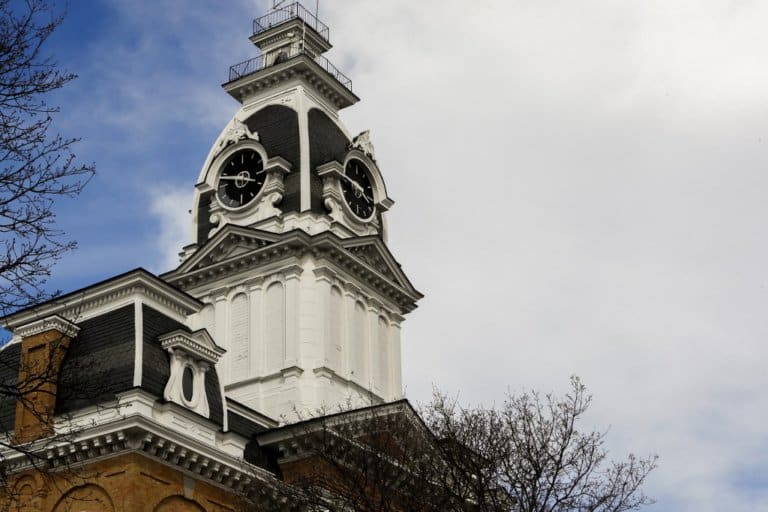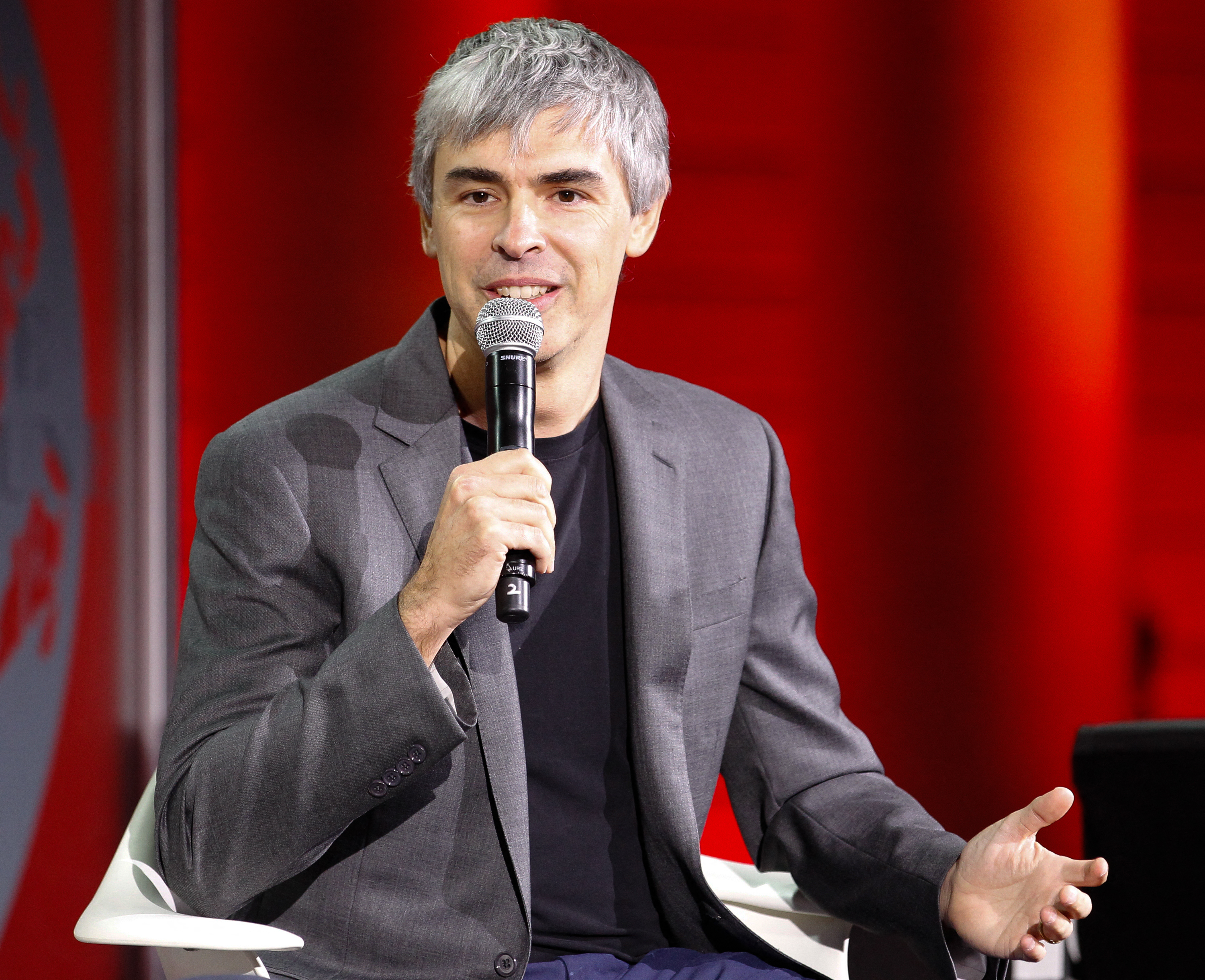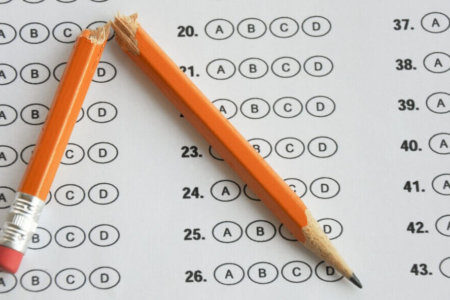
The hardest colleges to get into in the US claim to be superior for a variety of reasons.
Be it for its exclusivity, location, rigorous academia, how expensive it is, a who’s who network or the level of validation it brings to graduates, these are places many families go to great lengths to get their children admitted.
Who can forget one of the biggest college admissions scams involving Felicity Huffman, Lori Loughlin, coaches, and admission officers back in 2019?
The celebs paid up to half a million dollars to get their daughters into the University of Southern California — even going so far as to lie about their extracurricular and athletic achievements.
Their desperation may have led to them facing criminal charges — but for the rest of us, they serve an important lesson. And that is: the hardest colleges to get into in the US show us that it’s not just good grades and test scores that matter.
The factors considered by many admissions officers are more well-rounded. They look at each applicant from many angles.
These include their achievements, interests and potential. And while this is fairer than just looking solely at grades, it’s harder in the sense that you can never guess the formula to getting accepted.
Each of the hardest colleges to get into has its own unique reasons for rejecting thousands of applications they receive per year.
Many do not specify their explicit reasons for this but by putting together many news reports, we can understand better why they turn away seemingly qualified and deserving students every year.
Let’s look at this list from US News & World Report that ranks each college based on its acceptance rate.
Minerva University
Were you expecting an Ivy League institution? Admittedly, us too.
It may come as a surprise that Minerva University tops the list, with a shocking acceptance rate of only 1%.
It’s ranked as the world’s most innovative university, and offers what they call a reinvented curriculum, with project-based, experiential learning. There is no fixed campus, and students will be travelling and living together in dorm rooms across these seven cosmopolitan cities – San Francisco, Seoul, Hyderabad, Berlin, Buenos Aires, London, and Taipei.
Their application methods are unorthodox, to say the least. Acceptance decisions won’t be made based on standardised test scores or fancy cover letters, but rather, things you can’t study for. These could range from interviews to essays detailing who you are as a person and what you have achieved.
The university only admits people who they see potential in, regardless of their religion, nationality, ethnicity, or even their financial situation. Would you attempt to apply?

Everyday, new research discoveries and prototypes are made at Caltech. Source: AFP
California Institute of Technology
Students clamour to get into the California Institute of Technology, better known as Caltech, for one reason: research.
It boasts of very high research activity and is defined by its prowess in science, technology, engineering and mathematics.
Its admissions team recruits students with the most strength and diversity — which can be many things. To them, there is no single type of “Caltech student”, which explains its meagre acceptance rate of 3%.
For the Class of 2025, Caltech accepted 3.92% of first-year applicants. That’s about 320 students.
Each application is reviewed by two officers before it goes into faculty review. This is a process that is unique to Caltech.
Recently, Caltech accepted 412 students across six continents to its Class of 2027. More than one-third got in because they submitted a portfolio of creative and maker work, while 45% gave evidence of their own research.
So if you plan to join, be prepared to go the extra mile to display your research calibre.

Former president Barack Obama graduated from one of the hardest colleges to get into. Source: Dia Dipasupil /Getty Images/AFP
Harvard University
When you think of the hardest colleges to get into, it’s no surprise Harvard University comes to mind. It’s an Ivy League, after all.
The private institution is one of the oldest and most prestigious institutions in the world. It is also one of the wealthiest in the US, thanks to its generous injection of cash flow from gracious alumni.
Harvard’s 5,000-acre campus houses 12 schools, two theatres and five museums, and the largest academic library in the world.
Similar to Stanford, the average acceptance rate is 3%. The acceptance rate for the class of 2026 was 3.2%, while for the class of 2027, it was 3.41%.
A glance at its “What We Look For” admissions page reveals another possible reason that makes it one of the hardest colleges to get into.
Harvard is searching for “individuals who will inspire those around them during their college years and beyond.”
To assess this, the admissions teams will consider a long list of pointers, which include thought-invoking questions such as, “have you reached your maximum academic and personal potential?”, “are you a self-starter? What motivates you?”, and “what sort of human being are you now, and who will you be in the future?”.
If exploring these topics seems like an interesting concept to you, try your luck today at applying to one of the hardest colleges to get into.
Columbia University
Yet another Ivy League on the list, with only a 4% acceptance rate. To get into Columbia University, you’ll have to at least be in the top tenth of your graduating class, with impressive extracurricular activities and a fantastic college application essay.
Out of 57,129 applications, the university only accepted 2,246 students for the Class of 2027.
While top grades are recommended, Columbia surprisingly is a “Test Optional” school, meaning that it does not require standardised test scores, but will consider them if you choose to submit yours.
But as with more top institutions, grades aren’t all that matter. Columbia emphasises that it’s important for a student to be a great match for the school. Your personal values will have to align with Columbia’s mission and values, such as having a strong sense of purpose, and a desire to effect change. Columbia wants to work with students who aspire “ to advance knowledge and learning at the highest level and to convey the products of [their] efforts to the world.”
If you possess the grades they’re looking for, and have the passion and drive they seek, you can try your hand at applying.
Princeton University
Princeton University in New Jersey is one of the oldest universities in the country and another Ivy League institution.
It is also known to be one of the best in terms of research, faculty and academics, and boasts a slim acceptance rate of only 4%.
As expected, half of the applicants admitted here have SAT scores between 1500 and 1580 or an ACT score of 34 and 35.
Its admissions team aims to bring together a close-knit, but diverse group of high-achieving and intellectually gifted students from all over the globe.
When applying, prospective students are given a “Princeton Supplement”, which consists of questions such as:
- What academic areas most pique your curiosity, and how do the programmes offered at Princeton suit your particular interests? (250 words or fewer)
- Briefly elaborate on an activity, organisation work experience, or hobby that has been particularly meaningful to you. (150 words or fewer)
- Princeton has a longstanding commitment to service and civic engagement. Tell us how your story intersects.
Of course, you can help your application stand out with extracurriculars, a compelling personal statement, and recommendations from teachers who can attest to your skills, dedication, and potential for growth.

Larry Page, former CEO of Google, graduated with a Master of Science in computer science from Stanford. Source: AFP
Stanford University
Stanford University is one of the hardest colleges to get into in the US. Every year, thousands of hopeful students apply here, and a small handful gets in — as few as 4%.
According to the university’s website, it says their admissions team practises a holistic approach.
This means there is no minimum GPA or test score or number of AP or honours courses to complete to get in. So why so exclusive?
Here’s why. It is one of the most highly sought-after institutions in the world. It has award-winning academics and professors, is close to Silicon Valley and is an active campus.
It’s where Google founders Larry Page and Sergey Brin attended, along with Nike co-founder Phil Knight.
Being so popular leads to more applicants than it has spots for. Its already large pool of applicants grew even larger when it went test optional. With applicants not having to submit an SAT or ACT score, that means more people are applying than ever before.
The larger the applicant pool, the lower the acceptance rate, if there’s no corresponding increase in spots available.
Brown University
Brown University is the seventh oldest institution in the US and is a member of the Ivy League. It was the first member to accept students from all religious backgrounds.
With an overall acceptance rate of 5%, the selective application cycle saw Brown welcoming 1,730 students from a total of 51,302 applicants for the class of 2027.
“We look for intelligent, highly motivated students from all walks of life who may come from diverse backgrounds and cultural heritages, who represent different academic and extracurricular interests, and who bring a spectrum of ideologies to Brown,” its website states.
What about grades? You’ll be glad to hear that that’s not all that matters here.
“The fact is that it does not make sense for us to focus solely on grades as there are other indications of academic and intellectual talent,” its website states. “We know that grades at one school are not awarded in the same way as they are at another school.”
“The same applies to class rank. Everything else being equal, students with high grades often do stand out among our applicants, but we do not make our admissions decisions based on a grade average or class rank without also considering the many other factors that help us gauge an applicant’s promise.”

Plenty of research and trialling in engineering are conducted at MIT. Source: Joseph Prezioso/AFP
Massachusetts Institute of Technology
The Massachusetts Institute of Technology (MIT) is a private land grant research university that was established in 1861.
As a leading technical school, MIT attracts students worldwide for its engineering, mathematics, and computer science programmes. Its application rate is 5%, sometimes even dipping lower; for the Class of 2028, MIT accepted only 1,284 applications out of 28,232.
Good test scores aren’t the only aspect they look at, rather how you match with MIT is key. Their website says, “We’re not looking for applicants to have cured all infectious diseases in the world by the time they’re 15. Tutoring a single kid in math changes the world. Lobbying a senator to amend bad policy changes the world. There are thousands of examples.”
The university’s core spirit is collaboration and cooperation. And while opportunities seem abundant at MIT, they must be seized by those willing to take initiative and learn to use what’s around them. Their students are self-proclaimed risk-takers, with creative souls and an intense, curious, spirit. At the same time, the university prioritises downtime — one of their application’s essay question is “tell us about something you do simply for the pleasure of it.”
If you fit the bill, try your hand at joining MIT.
University of Chicago
Among the Ivy League listings, the University of Chicago stands out for its low acceptance rate of 5%.
The school ranks 21st globally in the QS World University Rankings 2025, and is an intellectual powerhouse that focuses on rigorous inquiry and a unique undergraduate core curriculum.
Out of 43,612 applications, the university only accepted 1,955 students for the Class of 2028.
The application process is simple and straightforward. The university encourages aspiring joiners to pursue strong curriculums in high school, taking classes in English, math, laboratory sciences, or social sciences.
Of course, enriching co-curricular activities help to supplement the process. These are not just limited to sports or clubs within school — other pursuits like community projects, part-time jobs, volunteer work or family obligations all count towards your application.
Yale University
Yale University is the third oldest higher education institution in the US and is famous for its strong reputation in academics and first-class research.
While its usual acceptance rate averages around 5%, Yale admitted only 3.7% of applicants in 2024, making it the lowest acceptance rate in history. It admitted 2,146 students to the class of 2028 from its largest-ever pool of 57,465 applicants.
Yale also practices optional submission of standardised testing scores, which means if students do not want to submit SAT or ACT scores, they need to pay attention to high school transcripts, recommendation letters, and essays.
Those who submitted the Coalition Application, Common Application, or QuestBridge Application have to respond to the following short answer questions:
- Students at Yale have time to explore their academic interests before committing to one or more major fields of study. Many students either modify their original academic direction or change their minds entirely. As of this moment, what academic areas seem to fit your interests or goals most comfortably? Please indicate up to three from the list provided.
- Tell us about a topic or idea that excites you and is related to one or more academic areas you selected above. Why are you drawn to it? (200 words or fewer)
- What is it about Yale that has led you to apply? (125 words or fewer)
So here’s another factor that makes Ivy Leagues some of the hardest colleges to get into: your answers have to stand out from thousands of others.
Disclaimer: This article was last updated on January 3, 2025.









